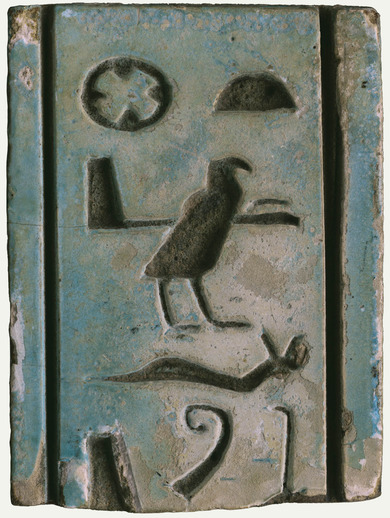Egyptian script
Egyptian script
Hieroglyphs not only package the complexity of the world in language, but also recreate it in images.
Loprieno, Antonio, Vom Schriftbild, 2011
Egyptian hieroglyphs are among the first written creations of humanity, a system which arose from an image script around 3100 BCE. Their usage in monuments, as a ceremonial script for veneration and glorification of gods and pharaohs, is seen within the sphere of the temples’ dominance, for example on buildings, steles, as well as items of ritualistic and everyday use. Hieratic, an abstract cursive script, arose around the same time as hieroglyphs. It was used for notation of commercial, administrative and literary texts on papyrus and shards. This in turn gave rise to Demotic, a type of everyday script. From the 2nd/3rd century AD the Egyptian language was set down using the Greek (Coptic) alphabet and hieroglyphs lapsed into obscurity. In the 19th century, Frenchman Jean-François Champollion laid the groundwork for their deciphering.
The characters in Egyptian script are associated with both meaning and sounds, and stood for individual terms or words, sometimes whole conceptual units, but were also used to denote consonants and syllables. There were also supplementary signs to aid pronunciation and “silent” signs which helped readers interpret or delineate words. Script was written both left-to-right and right-to-left, sometimes vertically as well.

